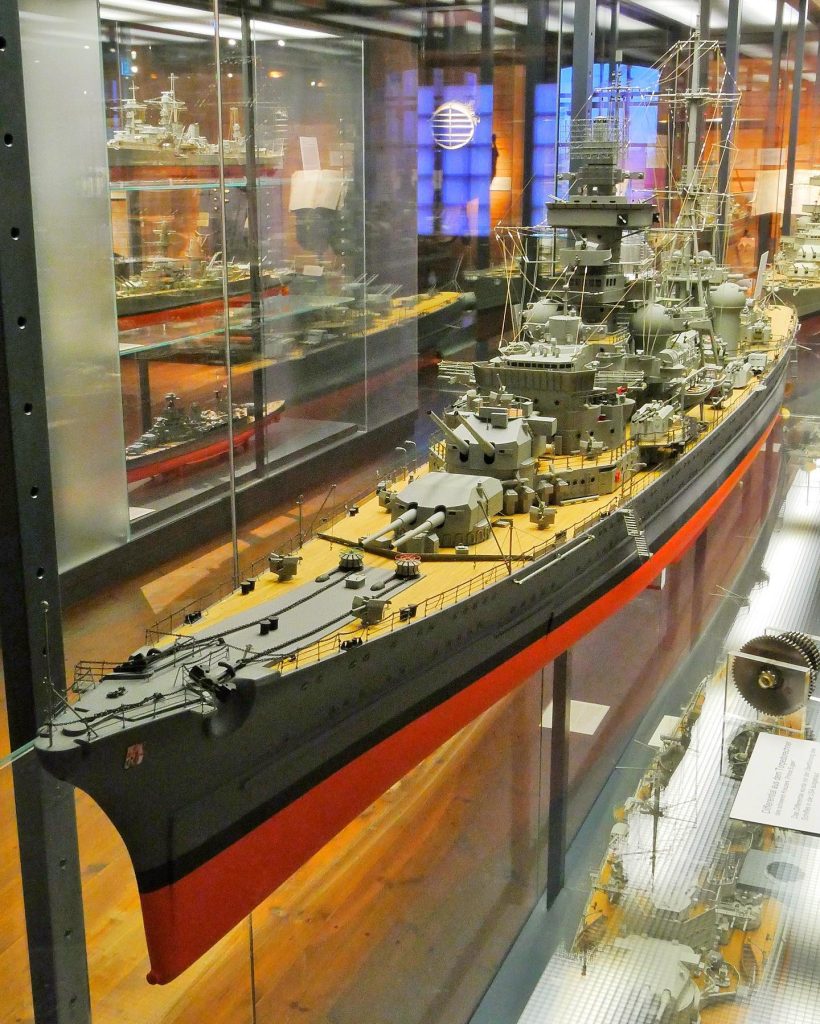
Heavy Cruiser Prinz Eugen. Her model built by Hans-Georg Dürr in a scale of 1:100 is part of our exhibition on the navies of World War II on deck 5 of the museum.
The heavy cruiser Prinz Eugen was the third ship of the Admiral-Hipper-class, part of the naval rearmament plans of Nazi Germany after renaming its navy as Kriegsmarine (war navy) and signing the Anglo German Naval agreement in 1935. The Agreement allowed Germany to build five 10000 tons heavy with a main armament of 20,3cm guns. Prinz Eugen was one of them, but her full load displacement was actually 19050 tons.
Her construction started in 1936 at the Germaniawerft shipyard in Kiel, from where she was launched in 1938. She was commissioned on 1 August 1940 already in World War II. Her sea trials took place in the Baltic Sea together with the battleship Bismarck, whereby a mine hit caused her considerable damage, delaying her first mission. On may the 18th 1941, she and the Bismarck started the Operation Rheinübung to fight in the North Atlantic. On May the 24th they fought the Battle of Denmark Strait with HMS Hood and HMS Prince of Wales. The Hood was sunk by the Bismarck, that was herself damaged, and Prinz Eugen was released to pursue merchant raiding on her own. An engine malfunction forced her to set course for Brest. From there, the successful channel breakthrough with the Gneisenau and the Scharnhorst, named Operation Ceberus, led to Wilhelmshaven on 12. Several planned missions in Norway were broken up. She remained in the Baltic Sea carrying out training missions until the approach of the Soviet Army. She then engaged in the bombardment of land targets and supply lines. At the end of the war, the ship was in Copenhagen, Where she was decommissioned and given to the Royal Navy. She was then taken over by the US Navy as USS Prinz Eugen. She was then deployed near the Bikini Atoll as a target ship for Operation crossroads, a series of atomic bomb tests in 1946. She was not directly hit, but so contaminated by nuclear fallout that she was towed to the Kwajalein Atoll and abandoned. On December the 22nd, she capsized and sank.
Her model built by Hans-Georg Dürr in a scale of 1:100 is part of our exhibition on the navies of World War II on deck 5 of the museum.
